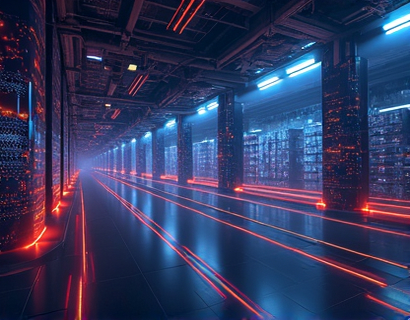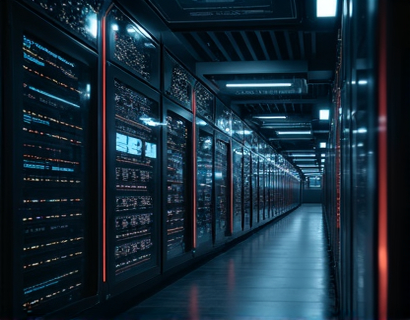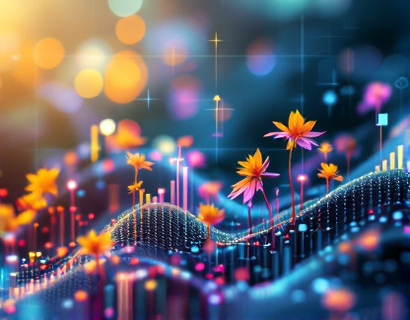Maximizing Aquaculture Business Efficiency with Cutting-Edge Management Software Solutions
In the rapidly evolving landscape of aquaculture, business owners and managers face numerous challenges that can impact the success and sustainability of their operations. From optimizing resource use to enhancing productivity, the need for efficient management solutions has never been more critical. Cutting-edge management software has emerged as a game-changer in the industry, offering specialized tools that streamline operations, reduce costs, and improve overall performance. This article delves into how these advanced software solutions can revolutionize aquaculture business management, providing essential insights for owners and managers aiming to thrive in a competitive market.
Understanding the Challenges in Aquaculture Management
Aquaculture, the farming of aquatic organisms, involves complex processes that require meticulous planning and execution. One of the primary challenges faced by aquaculture businesses is the efficient management of resources. This includes optimizing feed usage, monitoring water quality, and ensuring the health of aquatic species. Additionally, regulatory compliance, labor management, and financial tracking are critical aspects that demand attention. Traditional management methods often fall short in addressing these multifaceted challenges, leading to inefficiencies and potential losses.
Role of Advanced Management Software in Aquaculture
Advanced management software solutions are designed to address these challenges by providing comprehensive tools that integrate various aspects of aquaculture operations. These solutions offer a centralized platform where data can be collected, analyzed, and acted upon in real-time. By automating routine tasks and providing actionable insights, these software tools enable aquaculture businesses to operate more efficiently and effectively.
Streamlining Operations
One of the most significant benefits of management software in aquaculture is the streamlining of operations. These systems automate tasks such as feeding schedules, water quality monitoring, and inventory management. For instance, automated feeding systems can adjust feed quantities based on real-time data on fish size, activity levels, and environmental conditions, ensuring optimal growth while minimizing waste. This not only saves time but also reduces the risk of overfeeding or underfeeding, which can have detrimental effects on fish health and growth rates.
Moreover, these software solutions often include integrated scheduling tools that help manage daily, weekly, and monthly tasks. Managers can set reminders for routine maintenance, veterinary checks, and other critical activities, ensuring that nothing is overlooked. This level of organization helps in maintaining a smooth and efficient operation, reducing the likelihood of errors and delays.
Enhancing Productivity
Productivity is a key factor in the success of any aquaculture business. Advanced management software enhances productivity by providing detailed analytics and reporting features. These tools allow managers to monitor key performance indicators (KPIs) such as growth rates, feed conversion ratios, and mortality rates. By having access to real-time data, managers can make informed decisions that optimize production processes.
For example, data analytics can identify patterns and trends that indicate potential issues before they become critical. Early detection of disease outbreaks or suboptimal environmental conditions can lead to timely interventions, reducing the impact on the aquatic population and maintaining high productivity levels. Additionally, productivity reports can help in benchmarking performance against industry standards, identifying areas for improvement, and setting realistic goals.
Optimizing Resource Use
Resource optimization is crucial for the sustainability and profitability of aquaculture businesses. Management software solutions play a vital role in this area by providing tools for precise resource management. Water quality management is a prime example, where software can monitor parameters such as pH, temperature, dissolved oxygen, and ammonia levels. Alerts and notifications can be set up to inform managers of any deviations from optimal ranges, enabling prompt corrective actions.
Feed management is another critical aspect where software can significantly reduce waste and costs. By integrating with feed dispensers, these systems can ensure that the right amount of feed is delivered at the right time, based on the specific needs of the aquatic species. This precision feeding not only improves feed conversion ratios but also reduces the environmental impact of excess feed entering the ecosystem.
Improving Financial Management
Financial management is a cornerstone of any successful business, and aquaculture is no exception. Advanced management software includes robust financial modules that simplify accounting and budgeting processes. These modules can track income and expenses, generate invoices, and provide detailed financial reports. By having a clear overview of financial performance, managers can make informed decisions about investments, pricing strategies, and cost-cutting measures.
Moreover, these software solutions often offer budgeting tools that help in planning and forecasting financial needs. Managers can set budgets for different departments, monitor actual spending against the budget, and receive alerts for any overspending. This level of financial oversight ensures that resources are allocated efficiently, reducing the risk of financial strain.
Enhancing Decision-Making
Data-driven decision-making is a significant advantage of using advanced management software in aquaculture. These systems collect and analyze vast amounts of data, providing insights that would be difficult to obtain through manual methods. Managers can use these insights to make strategic decisions about expansion, new product development, and market entry.
For instance, market analysis tools can provide data on consumer trends, competitor pricing, and demand forecasts. This information helps in tailoring production to meet market needs, ensuring that the business remains competitive. Additionally, risk assessment tools can evaluate the potential impacts of various scenarios, such as disease outbreaks or changes in regulations, allowing managers to develop contingency plans.
Integration and Scalability
Modern management software solutions are designed to be scalable and easily integrable with existing systems. This flexibility is crucial for aquaculture businesses that may start small and grow over time. Whether it's integrating with hardware devices like sensors and automated feeders or connecting with third-party services for data analytics and reporting, these software solutions can adapt to the evolving needs of the business.
Scalability ensures that as the business grows, the software can handle increased data volumes and more complex operations without compromising performance. This is particularly important in the aquaculture industry, where businesses often expand to meet growing demand or explore new markets.
User-Friendly Interfaces
Despite the complexity of the data and processes they manage, advanced management software solutions are designed to be user-friendly. Intuitive interfaces and comprehensive training resources ensure that staff can quickly learn and effectively use the tools. This reduces the learning curve and minimizes disruptions to daily operations.
Moreover, many software providers offer ongoing support and updates, ensuring that the system remains up-to-date with the latest features and security measures. This support is invaluable for businesses that may not have in-house IT expertise.
Case Studies and Success Stories
To illustrate the real-world impact of advanced management software in aquaculture, consider a few success stories. One notable example is a mid-sized fish farm that implemented a comprehensive management system to optimize its operations. Within a year, the farm reported a 20% increase in productivity, a 15% reduction in feed costs, and a significant improvement in water quality management. These improvements not only enhanced the farm's profitability but also reduced its environmental footprint.
Another case involves a group of small-scale shrimp farmers who adopted an integrated management solution. The software helped them standardize feeding schedules, monitor water parameters, and track growth rates. As a result, they achieved a 25% increase in shrimp yield and a 10% reduction in mortality rates. These gains have allowed the farmers to expand their operations and enter new markets.
Future Trends in Aquaculture Software
The aquaculture industry is continuously evolving, and so are the management software solutions designed to support it. Emerging trends include the integration of artificial intelligence (AI) and machine learning (ML) to further enhance data analysis and decision-making. AI can predict optimal feeding times, detect early signs of disease, and even optimize energy usage in facilities.
Additionally, the Internet of Things (IoT) is playing a significant role in connecting various devices and sensors within the aquaculture environment. This connectivity enables real-time monitoring and control, providing a more holistic view of the operation. As these technologies advance, management software will become even more powerful and intuitive, offering even greater benefits to aquaculture businesses.
Conclusion
In conclusion, advanced management software solutions are transforming the way aquaculture businesses operate. By streamlining operations, enhancing productivity, optimizing resource use, and improving financial management, these tools provide essential support for success in a competitive market. As the industry continues to grow and evolve, the importance of these software solutions will only increase. For aquaculture business owners and managers, embracing these technologies is not just an option but a necessity for staying ahead and achieving long-term sustainability.










































